
Edward Lee Morgan was an American jazz trumpeter and composer. One of the key hard bop musicians of the 1960s and a cornerstone of the Blue Note label, Morgan came to prominence in his late teens, recording with bandleaders like John Coltrane, Curtis Fuller, Dizzy Gillespie, Hank Mobley and Wayne Shorter, and playing in Art Blakey's Jazz Messengers.

The Watts Towers, Towers of Simon Rodia, or Nuestro Pueblo are a collection of 17 interconnected sculptural towers, architectural structures, and individual sculptural features and mosaics within the site of the artist's original residential property in Watts, Los Angeles, California, United States. The entire site of towers, structures, sculptures, pavement and walls were designed and built solely by Sabato Rodia, an Italian immigrant construction worker and tile mason, over a period of 33 years from 1921 to 1954. The tallest of the towers is 99.5 feet (30.3 m). The work is an example of outsider art and Italian-American naïve art.

Watts is a neighborhood in southern Los Angeles, California. It is located within the South Los Angeles region, bordering the cities of Lynwood, Huntington Park and South Gate to the east and southeast, respectively, and the unincorporated community of Willowbrook to the south.
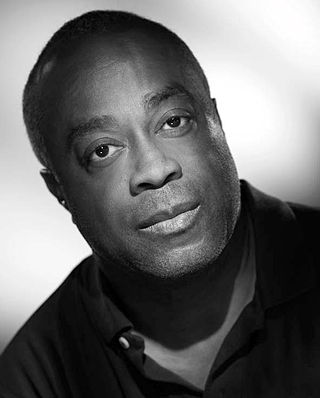
Charles Burnett is an American film director, film producer, writer, editor, actor, photographer, and cinematographer. His most popular films include Killer of Sheep (1978), My Brother's Wedding (1983), To Sleep with Anger (1990), The Glass Shield (1994), and Namibia: The Struggle for Liberation (2007). He has been involved in other types of motion pictures including shorts, documentaries, and a TV series.
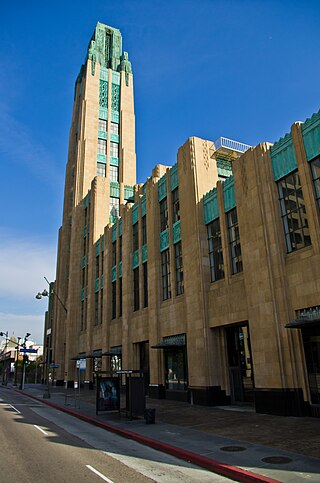
Bullocks Wilshire, located at 3050 Wilshire Boulevard in Los Angeles, California, is a 230,000-square-foot (21,000 m2) Art Deco building. The building opened in September 1929 as a luxury department store for owner John G. Bullock. Bullocks Wilshire was also the name of the department store chain of which the Los Angeles store was the flagship; it had seven stores total; Macy's incorporated them into and rebranded them as I. Magnin in 1989, before closing I. Magnin entirely in 1994. The building is currently owned by Southwestern Law School.
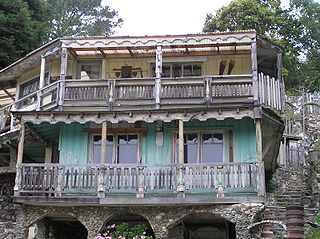
Nitt Witt Ridge is a house on two and a half acres in the coastal city of Cambria, California, United States. Artist and recluse Arthur "Art" Harold Beal (1896–1992) bought his hillside lot in 1928 and spent most of the next 50 years carving out the terraces with only a pick and shovel, creating his own "castle on a hill".
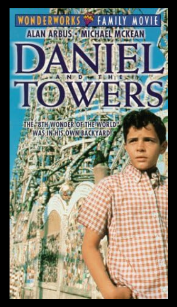
Daniel and The Towers is a television film featuring the folk art masterpiece, the Watts Towers, in the Watts neighborhood of Los Angeles. The film was directed by Paul Schneider, and broadcast on PBS's WonderWorks children's anthology television series. It was released on VHS in 1992.

Francisco Aguabella was an Afro-Cuban percussionist whose career spanned folk, jazz, and dance bands. He was a prolific session musician and recorded seven albums as a leader.

Los Angeles Plays Itself is an American video essay by Thom Andersen, finished in 2003, exploring the way Los Angeles has been presented in movies.
Nicholas King was an American actor and horticulturist who was instrumental in preserving the Watts Towers.

Brett D. Morgen is an American documentary filmmaker. His directorial credits include The Kid Stays in the Picture (2002), Crossfire Hurricane (2012), Kurt Cobain: Montage of Heck (2015), Jane (2017), and Moonage Daydream (2022).
Saving and Preserving Arts and Cultural Environments is a non-profit public benefit organization created with an international focus on the study, documentation, and preservation of art environments and self-taught, publicly-accessible artistic activity. Currently based in Aptos, California, SPACES boasts an archive of approximately 35,000 photographs as well as hundreds of books, articles, audio and video tapes/DVDs, and artists’ documents. SPACES has become recognized internationally as the largest and most complete archive on this subject.
Barbara McCullough is a director, production manager and visual effects artist whose directorial works are associated with the Los Angeles School of Black independent filmmaking. She is best known for Water Ritual #1: An Urban Rite of Purification (1979), Shopping Bag Spirits and Freeway Fetishes: Reflections on Ritual Space (1980), Fragments (1980), and World Saxophone Quartet (1980).

Harold in the Land of Jazz is the debut studio album by saxophonist Harold Land, recorded in 1958 and released on the Contemporary label.

I Called Him Morgan is a 2016 Swedish produced documentary film written and directed by Kasper Collin which offers an account of the life of jazz trumpeter Lee Morgan, and his relationship with his common-law wife Helen Morgan, who killed him in February 1972.
Nate "Mrafu" Morgan (February 9, 1953 – November 21, 2013 was an American jazz pianist and composer.

My Name Is Albert Ayler is a 2005 Swedish-American documentary film about the American Jazz musician Albert Ayler, written and directed by Kasper Collin.
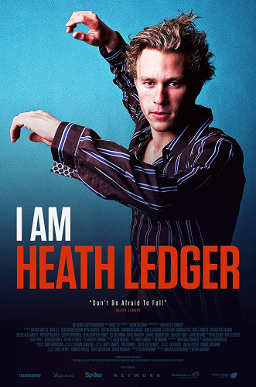
I Am Heath Ledger is a 2017 Paramount Network documentary film about actor Heath Ledger, who died in 2008. Directed by Adrian Buitenhuis and Derik Murray, the film presents interviews with Ledger's family, friends and collaborators.

The Eastern Star Home was a retirement home and convalescent facility in Los Angeles, California for the members of the Order of the Eastern Star, Master Masons and their female relatives. Built between 1931 and 1936, the home operated until the late 1990s when membership in the home had decreased precipitously to just 34 residents. "The retirement home moved to a new location, and the Order of the Eastern Star sold the property at Sunset Boulevard to Archer School for Girls."














